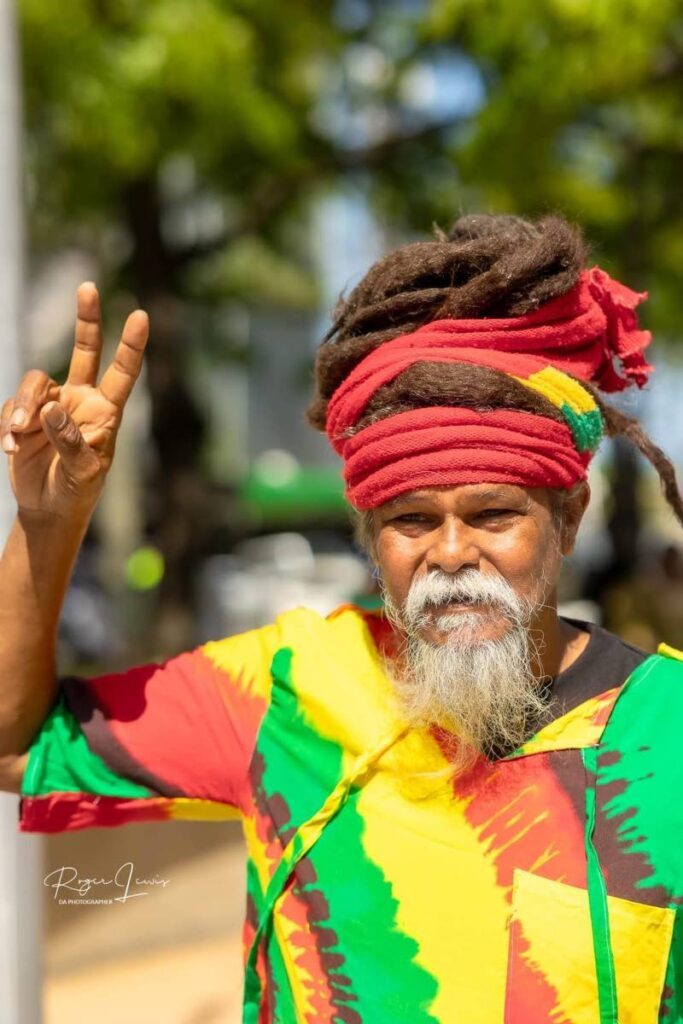Is there money in jumbie business?

Folklore characters don’t just come out of the woodwork, and the same goes for Carnival characters – moko jumbies and other elaborate costumes that require a combination of designers, woodworkers and tailors.
They share a great deal of responsibility for the grand spectacles that are no longer seen only during the Carnival season, and sometimes they are handsomely rewarded.
Traditional characters, especially moko jumbies, are becoming commonplace at opening ceremonies or for any given Carnival-type event in major cities around the world – evidence of a growing demand for an experience once unique to TT Carnival.
Junior Bisnath, founder of the San Fernando School of Arts (now the Junior Bisnath School of Arts) is regarded as a cultural icon and is a major player in the business of traditional mas.
He is a woodworking extraordinaire, spending almost three decades training schoolchildren and young adults in woodcraft, performance art and other skills.
But undoubtedly motivated by his love for culture, woodwork and teaching, Bisnath has sacrificed personal opportunities to earn big sums in order to continue teaching. He is foremost a creator, not a businessman.
That’s not to say that others cannot or should not make a comfortable living exploring opportunities to spread TT’s culture, he says. In fact, many who have learnt from him have done just that.
He is now training a second and third generation of students.
“As a matter of fact the children of those students are in training now,” said the 67-year-old multiple award-winner.
About 30 years ago, Bisnath explored a niche market. Today, the opportunities come to him, and he takes them with open arms, while including the schoolchildren of San Fernando.
Bisnath created Kaisokah, a group of moko jumbies that became so popular, it branched out to the US, where it frequently performs for grand openings and cultural events.
He is also responsible for the emergence of moko jumbies in US circuses.
He merged the genres kaiso and soca to create kaisokah, and spelt it that way out of respect to late soca legend Ras Shorty I, who frequently spelt soca as “sokah.” Bisnath also spells it kaisokah to distinguish it from another touring culture group that goes by a similar name.

Around the time he established the school, the National Carnival Commission (NCC) approached Bisnath to train schoolchildren to use stilts during Carnival season, which became an annual project.
Since then, he remembers a trip to Zimbabwe over a decade ago, when moko jumbies were included in the country’s second international Carnival. He and his team were also part of a large contingent at the 2006 football World Cup in Germany.
Bisnath’s moko jumbies are regularly called out for smaller events, both private and government-sponsored events. This allows the performers to get paid and the group to buy textiles and materials to build more stilts and costumes.
“It’s only natural. They’ll lose interest (if there’s no money involved). And it’s a skill,” he said, one like any other that deserves compensation. “It’s one of the most dangerous Carnival characters – one careless footstep and you damage a hand or foot.”
Bisnath said his characters have recently been used in advertisements by two competing telecommunications companies, which he said is evidence of their ability to draw attention to an event or brand.
Though work almost always comes to him, Bisnath said he still intends to approach governments and committees around the world to offer a TT take on Carnival, as was done in Zimbabwe.
He has no doubt others can follow.

“There is money and opportunity in everything. It all depends on how skilled you are and how much you are about the craft,” he said.
Nicholas Subero has just about got off the ground as an established performer in the arts.
Subero, 28, works with the National Theatre Arts Company, under the Tourism Ministry, as a performer. He also performs at events unrelated to the company, as long as they don’t clash.
Subero delved into the performing arts, after he was invited by fellow students at UWI to learn about the performances of Carnival characters, taught by a group of blue devils from Paramin.
“When that was done I was recruited by some friends who happened to be among that group for an Old Yard performance which would turn into a J’Ouvert performance, and from there, it kept growing into performances around the country.” The Old Yard is a masquerade of traditional Carnival characters, including mokos, hosted annually by the UWI's Department of Creative and Festival Arts. It originated from Viey La Cou, a similar showcase of traditional mas held at Queen's Hall.
The Carnival project that Subero took part in led to the creation of the popular Jab-A-Mien jab jab group, which still performs for shows and events today.
Subero was among a large contingent of performers who represented TT’s arts and culture at the Dubai Expo, in the United Arab Emirates, last year. He performed as the midnight robber. The original idea was for him to play a devil, but the performance was toned down to respect the cultural sensitivity of the conservative UAE.
“A living can be made from it – that’s what I’m doing right now,” Subero told Business Day. “I know it often sounds as if people are constantly on their knees, begging for handouts and for better opportunities. I know, and sometimes it can’t be helped.”

But he believes at least some responsibility lies with the biggest stakeholders, namely the government, to create infrastructure to develop a sustainable industry in the performance arts.
“With something guided by the people higher up to create infrastructure, it’s easier for the transition to become a full-time performer, and I don’t just mean as a traditional folklore character. Performers in TT in general are lacking a formal structure, where people abide by rules and you are guaranteed certain benefits to the individual performer."
He said he has had to seek alternative employment in the off-season.
“But I’m fortunate (now) to have one in the performing arts, so I don’t experience what some of (my colleagues) do in terms of a nine-to-five, where you sit behind a desk.”
Subero believes there has been an increase in cultural performances and opportunities since the pandemic restrictions have been eased.
“Right after the pandemic, promoters and the creative agencies have encouraged performers to be part of many of these events.
“The year we spent inside perhaps gave us a chance to reflect on (what’s special and unique) to TT, and to give promoters a chance to figure out how to maximise their product (and earning potential).”
Subero said he believes there has been a marked return of traditional characters to the forefront of marketing because of the striking nature of characters such as moko jumbies and blue devils.
He credited the Trinidad Theatre Workshop for his development, describing it almost as a rite of passage for serious local performers.
He and Bisnath, though their jobs and experience levels are vastly different, agree that the potential to earn a comfortable living will always depend on one’s passion for the arts and their willingness to explore the vastness of a largely untapped market.


Comments
"Is there money in jumbie business?"